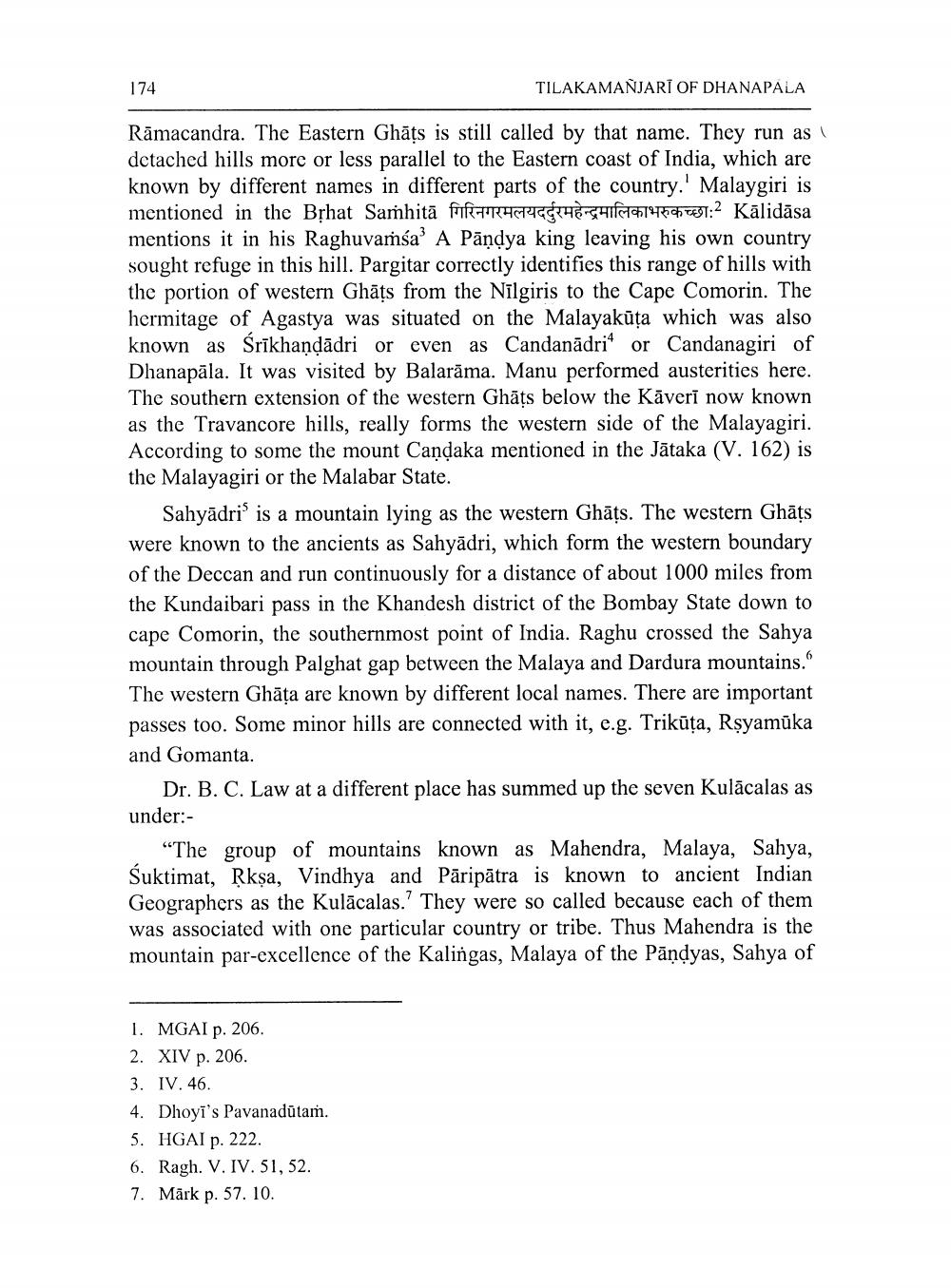________________
TILAKAMANJARĪ OF DHANAPALA
Ramacandra. The Eastern Ghats is still called by that name. They run as detached hills more or less parallel to the Eastern coast of India, which are known by different names in different parts of the country.' Malaygiri is mentioned in the Brhat Sarihitā गिरिनगरमलयदर्दुरमहेन्द्रमालिकाभरुकच्छा: " Kalidasa mentions it in his Raghuvamsa' A Pandya king leaving his own country sought refuge in this hill. Pargitar correctly identifies this range of hills with the portion of western Ghats from the Nilgiris to the Cape Comorin. The hermitage of Agastya was situated on the Malayakūta which was also known as Śrīkhaṇḍādri or even as Candanâdri' or Candanagiri of Dhanapala. It was visited by Balarama. Manu performed austerities here. The southern extension of the western Ghats below the Kāverī now known as the Travancore hills, really forms the western side of the Malayagiri. According to some the mount Candaka mentioned in the Jataka (V. 162) is the Malayagiri or the Malabar State.
174
Sahyadri is a mountain lying as the western Ghats. The western Ghats were known to the ancients as Sahyadri, which form the western boundary of the Deccan and run continuously for a distance of about 1000 miles from the Kundaibari pass in the Khandesh district of the Bombay State down to cape Comorin, the southernmost point of India. Raghu crossed the Sahya mountain through Palghat gap between the Malaya and Dardura mountains." The western Ghata are known by different local names. There are important passes too. Some minor hills are connected with it, e.g. Triküța, Rṣyamuka and Gomanta.
Dr. B. C. Law at a different place has summed up the seven Kuläcalas as under:
"The group of mountains known as Mahendra, Malaya, Sahya, Śuktimat, Rksa, Vindhya and Päripätra is known to ancient Indian Geographers as the Kulacalas.' They were so called because each of them was associated with one particular country or tribe. Thus Mahendra is the mountain par-excellence of the Kalingas, Malaya of the Pandyas, Sahya of
1. MGAI p. 206.
2. XIV p. 206.
3. IV. 46.
4. Dhoyi's Pavanadūtam.
5. HGAI p. 222.
6. Ragh. V. IV. 51, 52.
7. Märk p. 57. 10.




